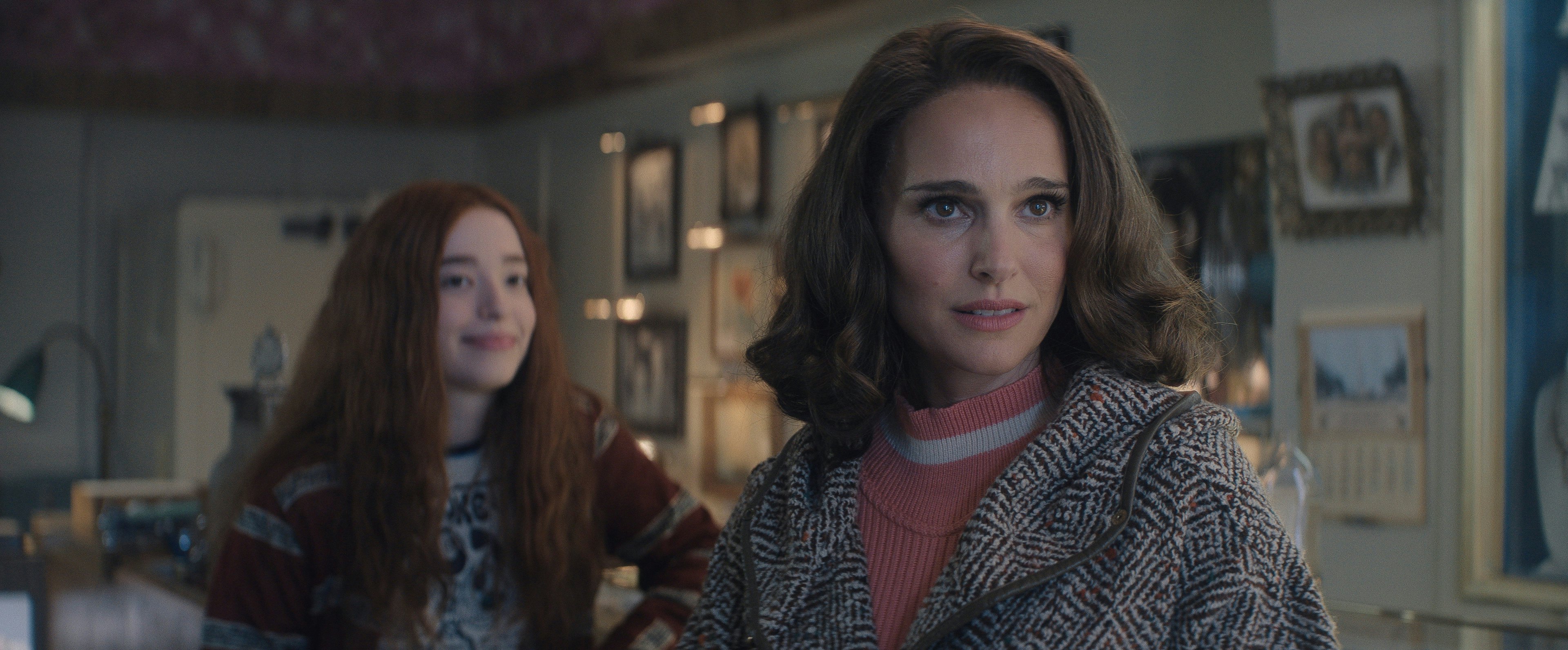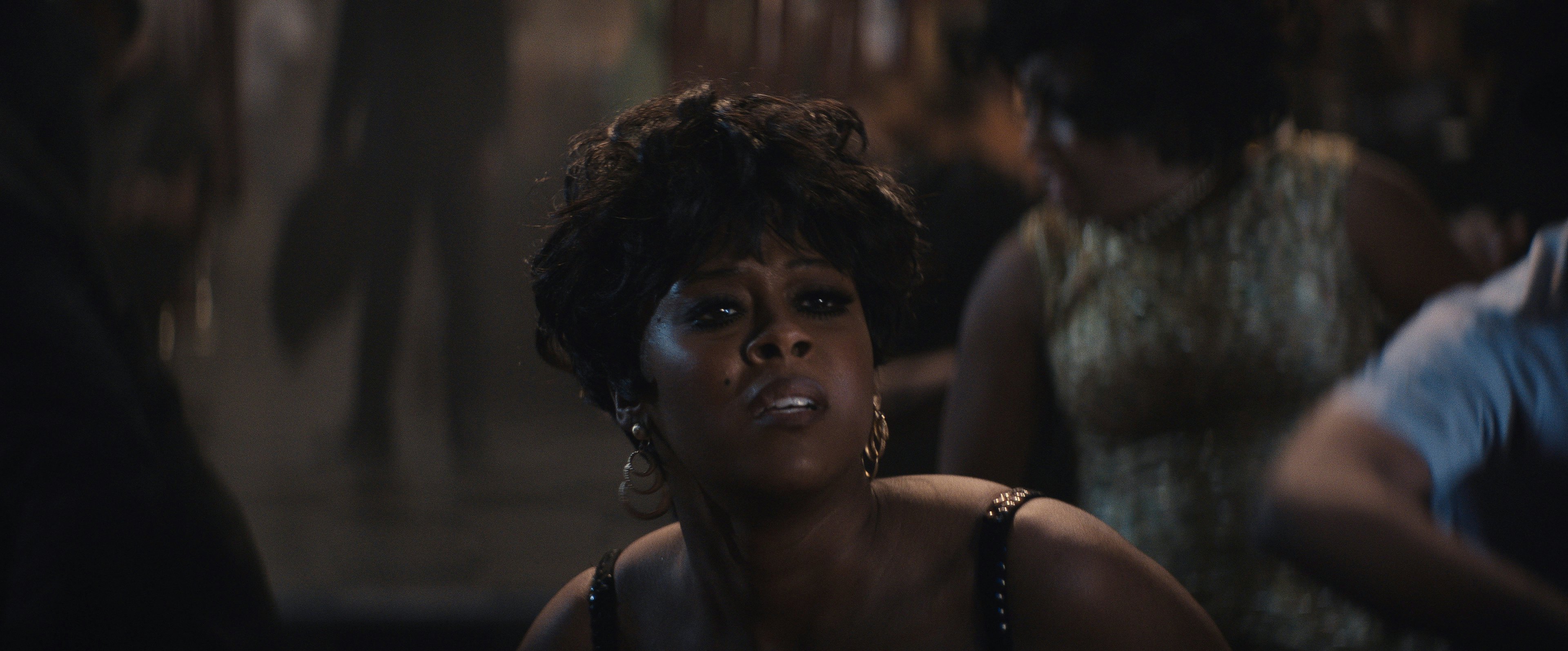
Lady in the Lake may make history as Natalie Portman’s foray into television, but it may just be the star vehicle that Moses Ingram (Obi-Wan Kenobi, The Queen’s Gambit) has long deserved. Even Portman’s protagonist, Madeleine Schwartz, is obsessed with Ingram’s doomed character, if only because she died under eerie circumstances. The series, created by Honey Boy director Alma Har'el, opens with a brief glimpse of the future: Cleo Johnson (Ingram) is already dead, which allows her to narrate the events of the series with a shrewd eye.
“Alive, I was Cleo Johnson,” she says calmly, as a man cloaked in shadow disposes of her body. “In my death, I became the lady in the lake.” That’s mostly due to Maddie, a housewife-turned-journalist who uses Cleo’s death to get a leg up in the industry. “Your writing dreams ruined your life,” Cleo adds. “Now, you want those same dreams to rewrite it. But why did you need to drag my dead body into it?”
It’s a fitting thesis for the series’ prickliest themes, which deal in victimhood, dehumanization, and the Problem That Has No Name. It also broadcasts the series’ moral spectrum pretty clearly, denoting which of its two leads is actually the hero (or, at least, the most blameless) in the events to come.
As compelling as it is, though, Ingram’s narration does a lot of the heavy lifting in Lady in the Lake. The series is an adaptation of the best-selling novel of the same name, so it’s entitled to an omniscient gaze. And it’s certainly welcome in the series’ more nebulous moments, when a character’s motivations, or even their immediate feelings, feel hidden beneath muddy waters. But too often does it feel like a crutch for this ambitious series, offering a crash course in the Feminine Mystique that only partially informs its mystery.
Lady in the Lake really kicks off about a month before Cleo’s death, on Thanksgiving Day, 1966. It’s here that she and Maddie first cross paths, and the staunchly-segregated Baltimore is racked by its first tragedy. When a young girl named Tessie Durst goes missing, Maddie begins to spiral. (The “why” of it all is a spoiler, but just know that it ties back to a core memory in her past.) It’s the last straw in a string of disasters that inspire her to abandon her cushy life and become more than “just a housewife.” In a way, she does get what she wants: she becomes a major player investigating Tessie’s disappearance, and gets a proper job as a journalist (her childhood dream) in no time at all. But more problems arise the more she tries to balance her own desires with the concerns of her estranged husband (Brett Gelman) and son (Noah Jupe, really embracing the role of the belligerent teen).
Though the first half of the series is largely concerned with Tessie, Cleo is also living on borrowed time. On paper, she’s not the most active character. She’s helpless to shield her family from the dark corners of their community, her youngest son from a terminal disease, or her best friend — a nightclub singer (Jennifer Mogbock) that brings a shattering soul to the series — from drug abuse. She’s also torn between her allegiances to a local kingpin, Shell Gordon (a quietly menacing Wood Harris), and upstanding community leader Myrtle Summer (Angela Robinson). But Ingram, thankfully, plays her as anything but a victim. Her take on Cleo is an open wound and a mother bear all rolled into one; even in death, she has a will of her own, and you get the sense that she’ll get the last laugh no matter what happens.

The series is, for the most part, engrossing. Star Wars fans will be quietly tickled at the idea of two alums sharing the screen, however briefly, and creator Alma Har’el injects enough manic, dream-like interludes to break up the oppressive grime of mid-60s Baltimore. Lady in the Lake also shares some connective tissue with Big Little Lies — the steward of the HBO series, the late Jean-Marc Valle, was one of many executive producers credited — so those who enjoyed the messy feminism there will find plenty to love here. A lot of that lives in Mikey Madison’s performance: she plays overeager assistant to Maddie’s frazzled anti-heroine, and she and Portman make a surprisingly-great comedic duo.
It’s in juggling its two disparate worlds that the series occasionally stumbles. Lady in the Lake has one foot in Baltimore’s tight-knit Jewish community, and another in the underbelly of Black Baltimore. Each setting is fully realized with lush sets and immersive music, but connecting one to the other — usually through a deep-running conspiracy — often forces you to think too hard. Its central mystery isn’t always the easiest to follow... or digest, as it deals with themes of sexual violence, racism, and the like. But it is, at the very least, bingeable: if not for its gonzo performances, then for its escapist world.







